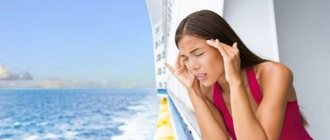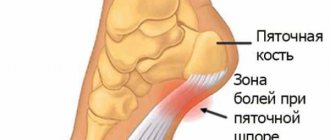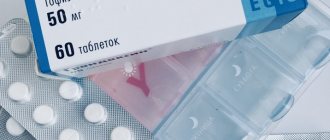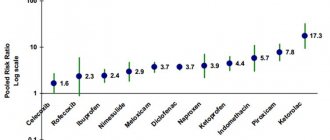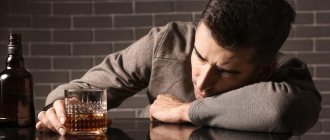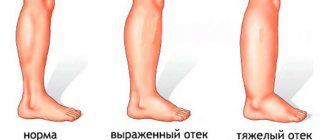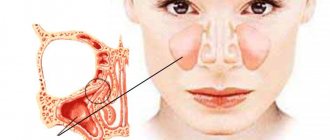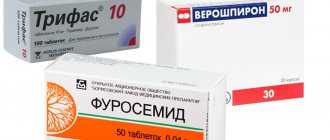How to avoid motion sickness in transport?
- Some children get sick more after eating, others before eating. Therefore, it is best to eat an hour and a half before the trip. What should the food be like? You should limit your consumption of fatty, sweet foods, and carbonated drinks. And, of course, you don’t need to overeat.
- Another important point: during the trip you need to swallow more often (drink cold water, suck mint candies). This reduces the likelihood of nausea and vomiting.
- In our body, the vestibular apparatus (inner ear and vision) is responsible for balance, so it matters where a child or an adult sits. In an airplane, the place where there is least vibration is the place near the wing; in a car or bus - front seats; on a train, it’s better to sit by the window and in the direction of travel, but on a ship, it doesn’t matter where, you’ll get motion sickness everywhere. During the trip, it is advisable to look into the distance.
- As for fresh air: it is also very important that it comes in. For example, in your car you can open the window, in an airplane you can sit your child in the middle and point 3 fans at him. This way, fresh air will circulate, which will alleviate motion sickness.
- Overheating is a factor that can increase the likelihood of motion sickness, as the mucous membranes of the mouth and nasal cavity dry out.
- Car air fresheners with different scents also increase the likelihood and provoke motion sickness, so before the trip you need to take care of your car, thoroughly wash and air it.
- If you know that your child gets sick after a certain time in the car, make stops and take your child for a walk outside. This will be good prevention.
- Today, physical methods of prevention to alleviate the condition of motion sickness in transport, namely acupressure, do not lose their relevance. The first point is located on the inner surface of the shoulder. From the wrist, we apply three fingers of the one who is sick and measure a point in the center, with gentle pressure we rub this point. The second point is located below the earlobe, between the neck muscles and the angle of the lower jaw. These points can be massaged simultaneously and alternately on the hands. In time - until the condition improves.
- One of the good ways to prevent motion sickness is various physical training and activities: playing sports, swinging on a swing, doing exercises in an upside-down position, etc. This way you prepare the child’s body not only for transport, but also for a flight into space.
- Regarding medications. They can also be used when you realize that none of the above will help or when it is not possible to use the above methods.
Suitable for children aged 3 years and older:
- Dimenhydrinate (Dramina, Aviamarin) tablets 50 mg
- Cocculin tablets homeopathic
Suitable for children aged 6 years and adults:
- Avia-sea homeopathic tablets
Suitable for children aged 4 years and older:
- Vertigohel homeopathic tablets
You can also try patches and bracelets. Their effectiveness has not been proven; there are cases when they help and when they do not.
Symptoms of motion sickness
Signs of motion sickness develop gradually. It all starts with feeling unwell, yawning, and deep breathing. The skin becomes pale and saliva is produced profusely. A sign of irritation of the peripheral nervous system is cold, sticky sweat.
When experiencing motion sickness, the first symptoms may include:
- drowsiness;
- dizziness;
- headache;
- feeling tired.
They are followed by nausea and vomiting, and coordination of movements may be impaired. If the trip is long, seasickness leads to a decrease in blood pressure. Uncontrollable vomiting can cause severe dehydration.
Each person experiences motion sickness with a different set of symptoms. Therefore, the predominance of signs of disorders in the nervous system, digestive tract, and cardiovascular system is distinguished. But most often there is a mixed form.
Is a doctor needed when a child is rocking in transport?
If the child felt unwell in transport, as well as within an hour after the stop, then you need to see a doctor and sort out this issue.
Since motion sickness is a disruption of the connection between the vestibular system and vision, the child may have problems with vision (sharpness, astigmatism, strabismus), diseases of the ENT organs (the child had otitis media). Therefore, it is necessary to identify these diseases and treat them.
If you have had otitis, preventing motion sickness on an airplane is to use vasoconstrictor drops in the nose before takeoff and especially before landing.
Why does motion sickness occur?
Signals to the brain about the position of the body in space come from several systems at once. The vestibular apparatus, which is located in the middle ear, perceives acceleration, speed of movement, and the location of a person. The brain receives additional information from sensory receptors located throughout the body and the organ of vision. If there is a discrepancy between the signals, signs of motion sickness appear.
The body's reaction depends on age. In children aged 1 year, the vestibular apparatus is not yet developed, and vision is not used by the brain for orientation in space, so they do not develop motion sickness. With age, the nervous system trains and maintains a model of reaction to the action of a stimulus. Therefore, symptoms of seasickness appear less frequently.
Psychostimulants
This group of drugs can be called anti-fear drugs. Psychostimulants help cope with attacks of fear before flying on an airplane. What drugs are most often recommended:
- Caffeine is a natural remedy that is obtained from various plants (coffee, tea, holly, coca). Its actions include stimulating respiratory and cardiac activity, increasing mental and physical performance, and eliminating drowsiness.
- Sidnocarb - this drug enhances the release of norepinephrine at the synapses of the central nervous system, eliminating drowsiness, lethargy and lethargy. As a result, a person feels more alert and active, and his performance increases.
- Sidnogluton – has a stimulating effect on the central nervous system. Produced in combination with glutamic acid.
Among the disadvantages: increased blood pressure, heart rate, etc., so the product should be used carefully and after carefully studying the instructions. Doctors often prescribe psychostimulants along with antihistamines. Taking them together can increase the effect and reduce the risk of negative reactions.
Aminalon
This drug for motion sickness is available in the form of tablets and powder in sachets. Dispensed with a doctor's prescription. The active substance of the anti-sickness remedy is gamma-aminobutyric acid, which has a nootropic effect. "Aminalon" improves metabolic processes in the brain, stimulates the removal of metabolic products from tissues. These tablets are prescribed for various types of motion sickness, as well as to stimulate mental development and for various neurological problems. For motion sickness, the drug is taken twice a day, the course is 3-4 days (in advance, before the trip). Aminalon has virtually no side effects. Contraindications:
allergy to the components of the product, individual intolerance to the drug.
Aminalon
Planet organics
Vascular diseases of the brain (atherosclerosis, hypertension) and dynamic disorders of cerebral circulation, post-stroke period and brain injuries (to restore memory, speech), dementia, alcoholic polyneuritis, motion sickness symptom complex.
from 81
582
- Like
- Write a review
Folk remedies for motion sickness
If you know that any trip will be accompanied by illness, you can prepare in advance and use available remedies to suppress nausea and prevent vomiting.
Children should not travel on an empty stomach. But overeating before a trip is also not recommended. Adults are advised not to smoke or drink alcohol before going on a long trip.
Ginger root helps at home. To prevent the onset of symptoms, you should eat about 1 g before traveling, thoroughly crushing it. Anise essential oil has a positive effect. It is applied in advance to the back of the wrist, and when discomfort occurs, the aroma is inhaled.
Folk remedies include mint candies. Their effect is best experienced during an airplane flight; swallowing saliva helps equalize the pressure in the inner ear and avoid the feeling of stuffiness.
If you get motion sickness when traveling by car, you can pre-bandage your wrists with a medical or elastic bandage at home. It is believed that this is a good and safe way to overcome unpleasant symptoms without medications. In pharmacies you can already buy a motion sickness bracelet that works as an acupuncture remedy. For greater effect, it is recommended to wear it on two wrists.
Pharmacies offer several types of such products:
- for pregnant;
- for girls;
- for boys;
- for small children.
Remedies with untested effectiveness include navel sealing. Traditional healers believe that in this way they remind the body of the period of intrauterine development, so the person stops getting motion sickness.
If a child gets seasick
If the baby still gets seasick, then your task is to alleviate the child’s condition.
- Monitor the temperature in the car, do not let your child get too hot. This means that you should not dress him too warmly.
- You can use a small fan to keep your baby cooler, but don't overdo it, or your baby may get cold.
- You can attach a special screen to protect from the sun on the car window so that bright light does not interfere with looking ahead.
- Be sure to evaluate the ventilation in the car. Do not allow strong perfume or food odors.
- Cigarette smoke increases nausea if the child is already seasick, and can also provoke nausea. Do not allow anyone to smoke in the car.
- If your baby vomits, give him a couple of sips of breast milk, formula, or cool water to prevent dehydration.
- If the child has vomited several times, it is better to give a medication for dehydration - a rehydrant, which can be bought at the pharmacy.
- If you suspect your baby might vomit again, cover your baby's chest and stomach with a towel, as it will be easier to remove the towel than to completely change your baby's clothes.
What about medications for motion sickness?
In fact, medications for motion sickness are unsafe and have a number of side effects.
Despite this, the most effective drugs for motion sickness are drugs with Dimenhydrinate, for example, Dramamine, Aviamarin, but they are allowed from 1 year and are prohibited for pregnant and lactating women. It’s up to you to decide whether to give your child such a drug or not, but do not forget to consult with your pediatrician.
It happens that motion sickness strikes for the first time and the child vomits in the car, although this has never happened before. Do not panic! Stop the car, wash and change the baby, calm the child down, because this is a new condition for him. Give your child water, walk in some fresh air, and wait until your child feels better before driving again. Motion sickness is always unpleasant even for an adult, and even more so for a baby. But if preventive measures are observed, it is quite possible to alleviate the child’s condition. Take care of yourself and your loved ones and be healthy!
Where motion sickness may occur
A trip on any transport can be a provoking factor. Sea travel ranks first in terms of the frequency of symptoms. The risk increases if a person is in a closed cabin while moving and cannot monitor the movement of the vessel.
In childhood, during pregnancy, motion sickness occurs in a car when driving in the back seat. The reaction occurs due to a discrepancy between the sensations received by the visual analyzer and the vestibular apparatus. Signs of seasickness are also common when traveling by plane. Symptoms appear from the moment of a change in altitude, a turn, or when entering air pockets.
Malaise is least likely to occur in railway transport. Symptoms appear when sitting at the rear of a moving train. The probability is higher when traveling on a high-speed train that moves faster than 200 km/h.
Motion sickness occurs even among astronauts who are preparing for flights and training the vestibular apparatus. But in this case, the cause of the disease is weightlessness, which disrupts the functioning of the middle ear.
1.What is seasickness?
If you've ever felt sick while on a boat or on an airplane, then you know what seasickness
.
Or, more simply put, you understand what the phrase motion sickness
. Although motion sickness is not considered a long-term health problem or serious illness, motion sickness can make life very uncomfortable, especially if you travel frequently.
People can get motion sickness while traveling in cars, on planes, trains, on attractions, on boats and ships. Video games, flight simulators, and even studying objects through a microscope can also cause motion sickness. What these activities have in common is that the eyes see some movement, but the body does not feel it.
According to statistics, children from 5 to 12 years old, women and older people are more likely to suffer from motion sickness. And babies under 2 years old almost never get motion sickness!
As a rule, symptoms of motion sickness in transport
there is general malaise, nausea, vomiting, headache, pallor and cold sweat.
A must read! Help with treatment and hospitalization!
2. Cause of motion sickness and seasickness
Cause of motion sickness and seasickness
refers to situations where the inner ear, eyes, and other parts of the body that detect movement send unexpected or conflicting signals to the brain. One part of the body responsible for balance (such as the inner ear, eyes, or nerves that help maintain balance) may sense that the body is moving, but other parts of the body do not feel the movement. For example, if you are in the cabin of a large moving ship, your inner ear may perceive movement in the waves, but your eyes will not see any movement. A conflict arises between feelings and, as a result, seasickness or motion sickness.
Visit our Therapy page
Antiemetic drugs
For those who invariably feel nauseous on an airplane or other transport, the solution to the situation is to take anti-nausea medications. For example, “Tserukal”, “Torekan” and “Alo-Metoklop” are often prescribed. The main effect of the drugs is aimed at preventing the gag reflex. “Cerukal” and “Alo-Metoklop” only eliminate the feeling of nausea and eliminate the urge to vomit, but “Torekan” can also increase the adaptation of the vestibular apparatus to fluctuations that cause motion sickness.
